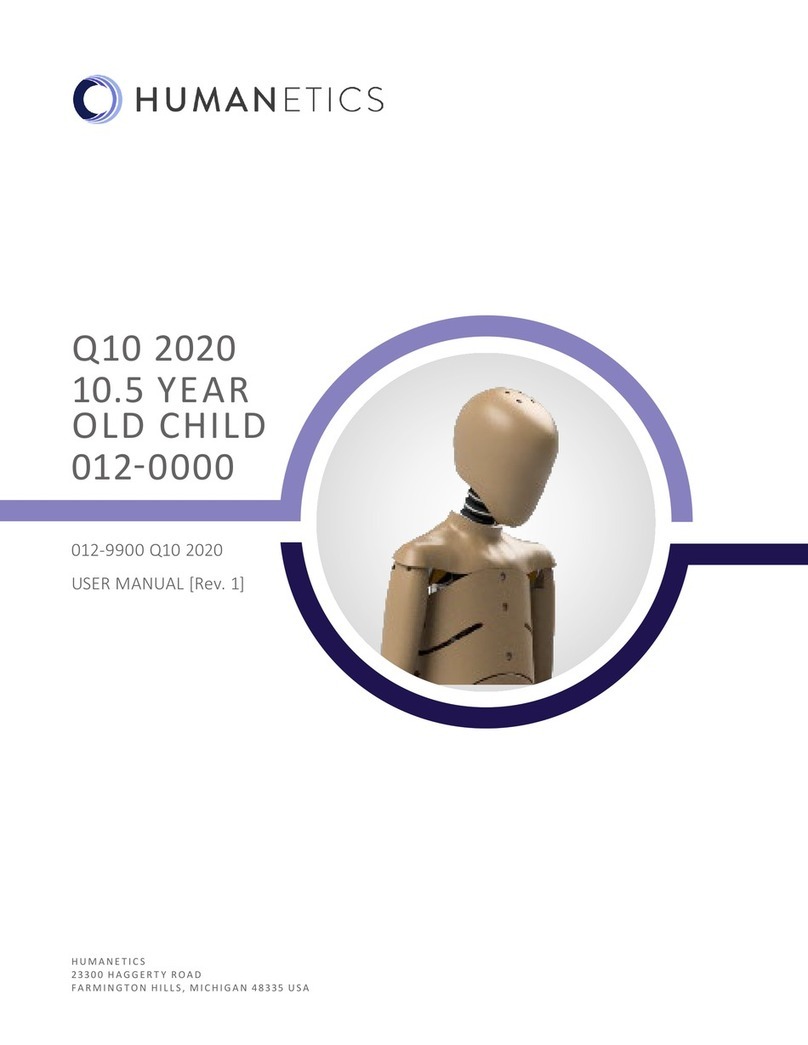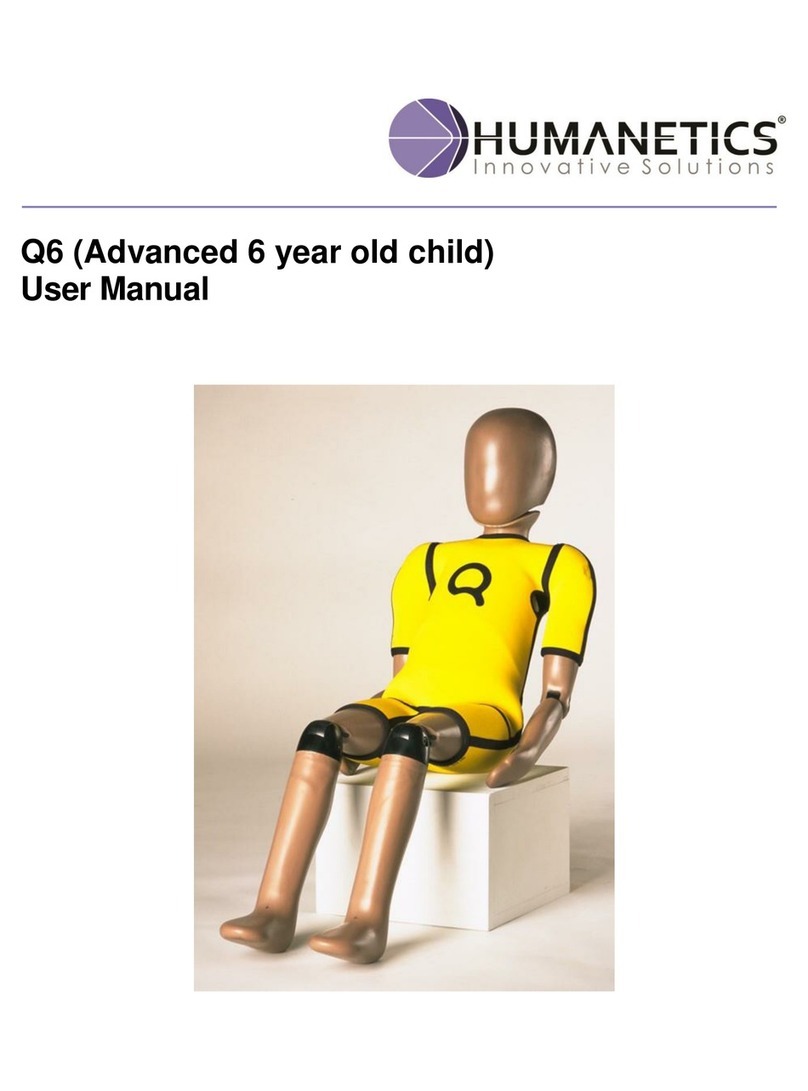
036-9900 User Manual Q1 (Advanced 1 year old child) Rev H Page 5 of 86
© 2016 Humanetics Innovative Solutions
List of Figures
Figure 1. Q-Dummy Family........................................................................................... 6
Figure 2. Accelerometer mounts for Q1......................................................................... 17
Figure 3. Three ATA ARS-06S sensor and mounts .......................................................... 21
Figure 4. Three Accelerometers and three DTS ARS-12K on mount................................... 21
Figure 5. Head instrumentation –both accelerometer bracket arrangements ..................... 22
Figure 6. 30 mm Bladder details .................................................................................. 23
Figure 7. CAD Pictures of Q1/Q1.5 Abdomen showing APTS sleeves assembled without
sensors and with foam plugs for certification ..................................................................... 24
Figure 8. Head Assembly with standard 020-1013 accelerometer mount............................ 26
Figure 9. Head Assembly including instrumentation ........................................................ 28
Figure 10. Neck Assembly ......................................................................................... 29
Figure 11. Head and Neck ......................................................................................... 31
Figure 12. Thorax Assembly ...................................................................................... 33
Figure 13 Arm Assembly (Right) ................................................................................... 34
Figure 14 Arm Assembly (Left) ..................................................................................... 34
Figure 15. String pot attachment................................................................................ 37
Figure 16. String pot Side impact bracket .................................................................... 38
Figure 17. Lumbar Spine ........................................................................................... 40
Figure 18. Tighten nut down on the lumbar................................................................. 41
Figure 19. Abdomen Assembly ................................................................................... 42
Figure 20. Pelvis Assembly ........................................................................................ 43
Figure 21. Hip Joint (Right) ....................................................................................... 45
Figure 22. Hip Joint (Left) ......................................................................................... 45
Figure 23. Leg Assemblies, Right & Left ...................................................................... 48
Figure 24. Arm Assembly (Left).................................................................................. 49
Figure 25. Arm Assembly (Right)................................................................................ 51
Figure 26. Q1 Full Body Impactor............................................................................... 62
Figure 27. Wire Suspension ....................................................................................... 62
Figure 28. Head form ............................................................................................... 63
Figure 29. Head form Lumbar Spine set-up.................................................................. 65
Figure 30. Head drop Frontal ..................................................................................... 68
Figure 31. Head Drop Lateral..................................................................................... 70
Figure 32. Lumbar Spine Frontal ................................................................................ 76
Figure 33. Lumbar Spine Lateral................................................................................. 78
Figure 34. Abdomen Certification ............................................................................... 80






























